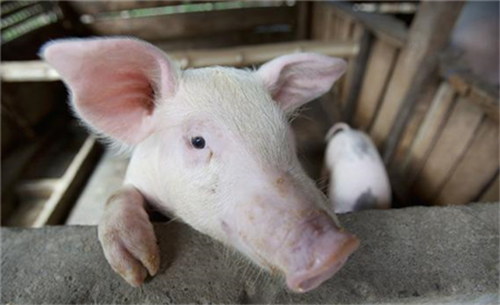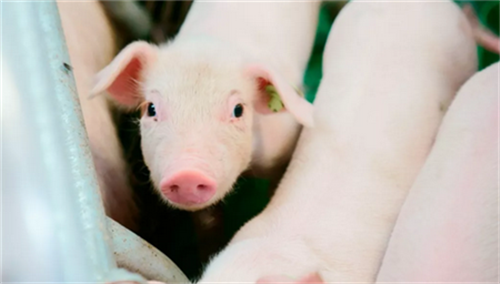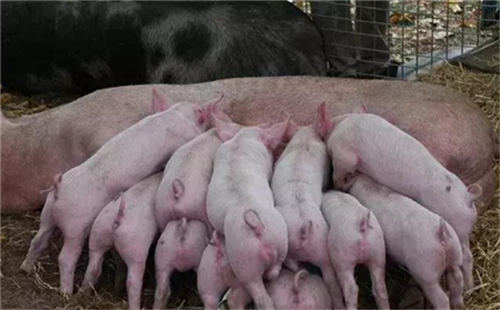A brief discussion on the cracks in the concrete Pool structure in the Construction of Pig Farm (2)
two。 In terms of material mix ratio:
a. Cement with low hydration heat is selected to avoid cracks caused by excessive hydration heat.
b. Generally speaking, the greater the unit water consumption of concrete, the greater the dry shrinkage of concrete. in the selection of concrete mix ratio, the unit water consumption of concrete should be strictly controlled. not only ensure low water content, but also consider such factors as collapse, segregation, bleeding, vibration and construction convenience.
c. For the concrete with lower dry shrinkage and higher elastic modulus, the larger the porosity of the coarse aggregate is, the greater the dry shrinkage is. The graded stones with large particle size can be given priority to reduce the specific surface area of aggregate in concrete and reduce the phenomenon of water bleeding and dry shrinkage of concrete.
d. In the mix proportion design of concrete, the selection of higher sand ratio means that the content of coarse aggregate stone is relatively reduced, the crack resistance of concrete is reduced, and the reasonable proportion of sand reduces the possibility of crack. At the same time, sand with low mud content is used to reduce the possibility of cracks.
e. Admixture: the pouring area and length of the bottom plate of the wall are relatively large, and the additives with low shrinkage should be reasonably selected to reduce the possibility of cracks.
The construction side of the pig farm often uses the supply of commercial concrete, and the control of concrete mix ratio is often not professional enough, so the mixing station must participate in the construction before pouring, so that the mixing station can fully understand the problems that are easy to occur in the construction site, so as to adopt countermeasures in the mix ratio.

3. Construction:
a. Strengthen the vibrator: insert one vibrator per 50cm, insert it quickly and pull it out slowly, and slowly pull out the vibrating rod after a large number of bubbles gush out from the surface to ensure the real light inside and outside the component.
b. Strengthen the Calendering times of surface concrete, reduce the occurrence of microcracks and reduce the stress concentration of microcracks to form visible cracks.
4. In terms of conservation:
a. The floor concrete should be covered and maintained after watering, and the maintenance scheme and maintenance time should be adjusted according to the air temperature.
b. The slab wall is maintained by late mold removal, the mold is removed after the strength reaches 75% of the design strength, and the mold is maintained by watering cover or brushing solution after removal, and the maintenance solution is maintained by watering brush in non-winter.
Fourth, the treatment methods of cracks that have appeared.
Cracks can be avoided as much as possible after various measures are taken, but some pools may still have cracks because one or more measures are not in place. For this part of the crack to take certain post-measures to deal with is not much harm to the use and durability. Because the impact of the overall bearing capacity of the crack is very small, it is considered to mainly meet the requirements of functional waterproofing, using waterproof treatment from the front surface and micro-expansion mortar treatment from the non-facing surface. There are three common treatment methods: JS waterproof coating brushing, polyurethane waterproof coating brushing, oil-soluble polyurethane caulking.
The surface cracks are treated with JS and polyurethane paint, and the deep cracks are treated with oily polyurethane, or the combination of deep layer and surface treatment can be used. Painting polyurethane has better waterproof effect but different colors, and JS waterproof color difference, crack treatment, waterproof, ductility and corrosion resistance are relatively good. The following is a brief introduction to the construction of JS waterproof treatment:
1. JS waterproof coating is a two-component waterproof coating composed of polymer emulsion and inorganic powder (special cement, additives, etc.). The main features are not only high elasticity of organic materials, but also good durability of inorganic materials, and color coatings can be prepared according to engineering needs. It can be directly constructed on wet or dry substrates (such as asphalt, rubber, SBS, APP, polyurethane, lightweight board, concrete, etc.). The construction of the facade, slope and top surface is uniform and does not flow. Some fine sand is added to the liquid and powder, which can be used as bonding and sealing mortar.
two。 Construction process: base and node treatment → JS polymer cement waterproof coating flexible waterproof layer → protective bonding layer → surface layer
3. Construction preparation and steps
a. Tool preparation: base cleaning tools such as hammers, chisels, wire brushes, sprinklers, brooms, rags, etc. Ingredient and batching tools such as
b. Platform scale, bucket, weighing bucket, batching bucket, electric mixer, scissors and so on. Paint coating tools such as roller brushes, scrapers, brushes, etc.
c. Material preparation: waterproof materials must have quality assurance and certificate. The incoming materials shall be sampled and inspected in accordance with the prescribed sampling methods, and can only be entered if the inspection is qualified. The packaging, storage and storage of waterproof materials shall meet the prescribed requirements.
d. Construction site environment: the temperature should be above zero, the ventilation condition is good, there is no obvious stagnant water in the base, and the lighting is sufficient.
4. Main construction methods
a. The grass roots must be leveled and solid surface remnants and protruding anomalies must be removed thoroughly and then washed clean with clean water. Then use the sealing material to do sealing treatment, fill tamping and polishing.
B. Preparation of JS polymer cement waterproof coating: according to the prescribed proportion, take the material with the material extraction tool, and then mix it thoroughly with a blender until there is no solid material in the material. In the construction, the preparation is strictly according to the mix ratio, and the preparation of the bottom layer, middle coating and surface layer is divided into two parts.
c. Special-shaped parts should do the additional layer of yin and yang corner, the intersection of metope and metope, the intersection of metope and ground, and so on.
d. Water storage test: the water storage test is carried out after the construction of the waterproof layer is dry.
5. Finished product protection:
a. Waterproof construction personnel should wear soft-soled shoes, and it is strictly forbidden to trample on the wet waterproof layer during construction.
b. Designated construction operators to strictly protect the waterproof layer.
c. The surface layer should be made in time after the construction of the waterproof layer is completed.
- Prev

A brief discussion on the cracks in the concrete Pool structure in the Construction of Pig Farm (1)
A brief discussion on the cracks in the concrete Pool structure in the Construction of Pig Farm (1)
- Next

The management plan of sows entering the delivery room for 49 days is really useful!
The management plan of sows entering the delivery room for 49 days is really useful!
Related
- On the eggshell is a badge full of pride. British Poultry Egg Market and Consumer observation
- British study: 72% of Britons are willing to buy native eggs raised by insects
- Guidelines for friendly egg production revised the increase of space in chicken sheds can not be forced to change feathers and lay eggs.
- Risk of delay in customs clearance Australia suspends lobster exports to China
- Pig semen-the Vector of virus Transmission (4)
- Pig semen-the Vector of virus Transmission (3)
- Five common causes of difficult control of classical swine fever in clinic and their countermeasures
- Foot-and-mouth disease is the most effective way to prevent it!
- PED is the number one killer of piglets and has to be guarded against in autumn and winter.
- What is "yellow fat pig"? Have you ever heard the pig collector talk about "yellow fat pig"?

